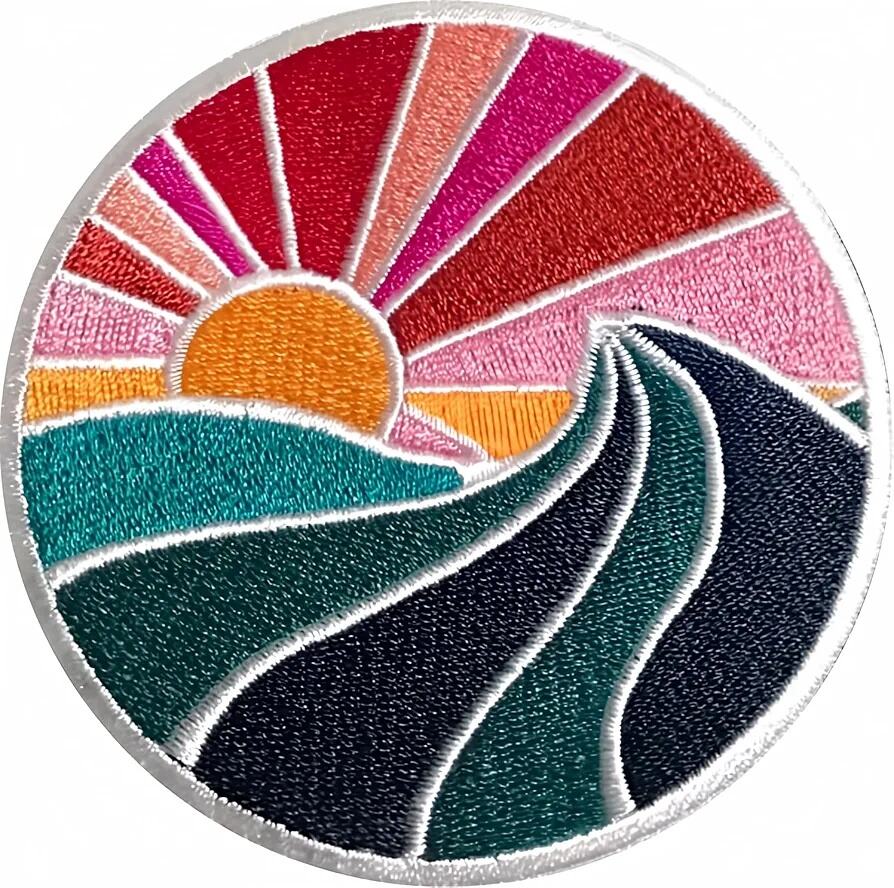Core Differences Between Silicone and TPU Patch Materials
Chemical and Physical Properties of Silicone and TPU
Silicone patches have this silicon-oxygen backbone that gives them really good heat resistance and makes them pretty flexible too. On the other side of things, TPU or thermoplastic polyurethane works differently. It mixes those tough isocyanate parts with softer polyol sections which creates something that can stretch but still hold up over time. The thing about silicone though is that its basic chemical makeup just doesn't break down easily when exposed to chemicals. But if we're talking about oil and grease resistance, TPU actually does better there. That's why many factories and workshops tend to go with TPU materials for their protective gear and equipment covers where they might come into contact with lubricants or other industrial fluids.
Flexibility, Elasticity, and Handling Characteristics
Most silicone materials fall within the Shore A hardness range of about 20 to 80 on the scale, which means they can stretch quite a bit—sometimes as much as 700%—before showing any signs of lasting damage. That's why we see silicone used so often in things that need to bend and flex repeatedly without breaking down over time. Then there's TPU material, which sits at a harder Shore D rating somewhere between 50 and 75. These materials hold their form even when subjected to constant movement and pressure, making them great choices for products like athletic equipment where durability matters most. Sports manufacturers rely heavily on this property for creating those reinforced patches that withstand heavy use during training sessions and competitions alike.
Thermal, UV, and Chemical Resistance Compared
Silicone can handle heat all the way up to around 230 degrees Celsius (that's about 446 Fahrenheit), way beyond what TPU can manage before it starts breaking down at just over 120 degrees Celsius (248 Fahrenheit). On the flip side though, TPU stays flexible even when things get really cold down near minus 30 degrees, while silicone gets stiff at around minus 55 degrees. And if someone leaves them outside for long periods, TPU actually holds onto its colors better than silicone does after being exposed to sunlight for ages. Both materials keep water out pretty well, but there's something special about how chemically stable silicone is that makes it stand out in places where safety matters most, like hospitals or kitchens handling food products.
Abrasion and Wear Performance in Practical Use
When it comes to wearing down over time, TPU really stands out compared to silicone. Tests show that after 10,000 back-and-forth movements, TPU loses about 35% less material than its rubbery counterpart. The reason? Simply put, TPU has better mechanical strength that actually cuts down on surface damage when things get rough in high friction environments. That makes it great for all sorts of tough applications where materials tend to break down quickly. Now silicone is different though. It's definitely softer which means it tends to collect more dirt and grime on those bumpy surfaces. But what works in its favor is that it doesn't tear easily and just needs regular cleaning to keep performing at its best level.
Silicone’s Performance Under UV Exposure and Extreme Temperatures
Tests conducted at the Polymer Stability Institute show that silicone keeps around 95% flexibility even after being exposed to UV light for over 1,000 hours. The material works well across extreme temperatures too, functioning reliably anywhere between minus 40 degrees Celsius and a scorching 230 degrees. That makes it ideal for parts used in cars, planes, and various outdoor gear where temperature swings are common. What's particularly useful is how the material's closed cell design stops water from getting inside. This feature means silicone won't crack or become brittle when left in damp environments for extended periods, which is a real problem for many other materials.
TPU’s Mechanical Strength and Impact Resistance Advantages
Thermoplastic polyurethane (TPU) boasts around four times the tensile strength of silicone materials, hitting approximately 35 MPa while maintaining impressive flexibility with about 500% elongation capacity. When put to the test, these materials handle impact forces of roughly 27 joules per square centimeter before showing signs of damage, which explains why manufacturers often turn to TPU for protective gear such as military-grade body armor. What sets TPU apart from traditional silicones is its remarkable ability to repair small surface scratches on its own thanks to molecular movement within the material structure. This self-repair characteristic significantly prolongs product lifespan, especially valuable in harsh industrial settings where constant wear and tear would normally require frequent replacements.
Real-World Case Study: Military and Tactical Gear Applications
A 12-month field evaluation of over 5,000 patches revealed distinct performance profiles:
| Material | Failure Rate (Abrasion) | Color Fade (UV) | Temperature Tolerance |
|---|---|---|---|
| Silicone | 8% | 9% | -40°C to 220°C |
| TPU | 3% | 22% | -30°C to 80°C |
TPU showed stronger tear resistance in high-abrasion zones such as tactical vest attachments, requiring 37% fewer replacements. Silicone performed better in engine compartments and extreme cold due to broader temperature tolerance. Both met MIL-STD-810G environmental standards.
Aesthetic Options and Customization Potential for Patches
Color Retention, Clarity, and Visual Appeal of Silicone
According to research published in the Polymer Science Journal last year, silicone retains about 98% of its original color even after sitting under UV light for 1,000 straight hours. That beats out pretty much all the fabric based options on the market today. What makes this material so special? Well, it's translucent enough to let designers stack layers without worrying about colors bleeding through each other. Plus, the surface doesn't absorb dirt like other materials do. For companies needing their brand logos to look sharp outdoors, these properties are gold. The material handles exact Pantone matches beautifully and gradients stay true for at least five years when exposed to sun and weather conditions. No wonder so many outdoor signage projects now specify silicone over traditional materials.
Surface Finishes and Texture Choices with TPU
TPU stands out for its incredible range when it comes to textures and finishes, offering around seven times as many choices as regular patch materials on the market today. The material can be finished in glossy or matte forms, reflecting light at about 85% compared to only 45% from silicone. There are also embossed patterns available ranging between 0.2 to 1.2 millimeters deep, plus special coatings that give that soft touch feel similar to real leather or suede fabrics. What this means for product designers is they can create all sorts of intricate surface effects such as brushed metals or even woven textiles while still maintaining strength through repeated bending and movement.
Customization Features: Engraving, Layering, and Color Matching
Manufacturers now achieve ±0.15 mm precision in laser engraving, enabling 3D effects through multi-layer silicone stacking. TPU’s thermal stability allows for clean hot-stamping of metallic foils without edge warping. For color-critical branding, both materials support high-fidelity reproduction:
| Feature | Silicone Capability | TPU Capability |
|---|---|---|
| PMS color matches | 98% accuracy | 95% accuracy |
| Opaque/transparent zones | Yes | Limited |
| Gradient transitions | Seamless | Step-based |
These capabilities transform patches into distinctive brand elements rather than simple identifiers.
Industry-Specific Application Suitability for Custom Patches
Fashion Industry: Lightweight, Stylish, and Comfortable Patches
Silicone has become pretty much everywhere in fashion these days because it doesn't irritate skin and bends just right when paired with soft fabrics such as silk or chiffon. The latest Textile Innovation Report from 2023 says something like 7 out of 10 luxury clothing companies go for patches thinner than half a millimeter thick. Now, TPU does have that shiny look that fits streetwear styles nicely, but let's face it, when worn for long periods, it just doesn't breathe as well as silicone does. Some tests show maybe around a third to two fifths less airflow through TPU material compared to silicone during all day wear situations.
Sports Equipment: Shock Absorption, Grip, and Dynamic Stress Needs
The bounce back ability of TPU materials hits around 98% elastic recovery according to ASTM standards, which makes these materials really great for parts of sports equipment that take a lot of punishment. Manufacturers who make hockey pads have found that their TPU reinforced sections can handle about three times as many wear tests compared to regular silicone when players slide across the ice. On the flip side, silicone does something different that works well for cyclists. The way it absorbs vibrations helps reduce hand tiredness in cycling gloves, with some studies showing a roughly 22% drop in fatigue levels during long rides. This kind of material science matters a lot in sports gear design where comfort meets performance requirements.
Military and Tactical Gear: Ruggedness, Stealth, and Reliability
| Material | IR Signature Reduction | Tear Strength (N/mm) |
|---|---|---|
| Silicone | 85% at 100m | 12.4 |
| TPU | 62% at 100m | 28.7 |
Silicone’s low infrared signature meets MIL-STD-3009 stealth requirements, while TPU’s higher tear strength supports heavy-duty straps and fasteners. Field trials show silicone maintains adhesion across -40°C to 120°C, outperforming TPU, which becomes brittle below -20°C.
Consumer Electronics and Wearables: Seamless Integration and Aesthetics
The dielectric strength of silicone around 2.8 kV per millimeter helps keep those tiny sensors in smartwatch patches working properly, which means heart rate readings stay pretty accurate most of the time. When it comes to making those fancy laser cut logos on phone cases, TPU gives manufacturers control down to almost sub-millimeter levels. But there's a catch for outdoor gadgets exposed to sunlight - TPU tends to yellow noticeably quicker than silicone does after being out in the sun for extended periods. Both materials can match colors really well too, getting close to Pantone standards with about 0.2 mm precision. This matters a lot when companies want their branding to look exactly right across different products.
Cost, Production Efficiency, and Long-Term Value Comparison
Raw Material Sourcing and Initial Cost Differences
Silicone patches cost about 20% more upfront than TPU due to specialized polymer formulations (Material Science Review 2023). TPU pricing is tied to petroleum markets, leading to volatility, whereas silicone benefits from more stable commodity pricing—advantageous for long-term bulk procurement.
Manufacturing Process Efficiency and Tooling Requirements
TPU molds 1.8 times faster than silicone in compression processes, lowering labor costs by $0.12–$0.18 per unit. However, silicone’s lower viscosity allows intricate designs to be formed in a single step, often eliminating the need for post-molding trimming and reducing tool complexity.
Lifecycle Costs: Maintenance, Replacement, and ROI
| Factor | Silicone Patches | TPU Patches |
|---|---|---|
| Annual degradation | 3–5% UV wear | 8–12% flexural |
| Repair compatibility | Not field-repairable | Heat-weldable |
| 5-year ROI | $2.10 per $1 spent | $1.65 per $1 |
Silicone’s 55% higher return on investment over five years justifies its initial premium in chemically aggressive or UV-exposed environments. TPU remains cost-effective where frequent design changes or impact resistance are priorities.
FAQ
What is the main chemical difference between silicone and TPU?
Silicone has a silicon-oxygen backbone providing heat resistance and flexibility, whereas TPU combines isocyanate parts with softer polyol parts for durability and resistance to oil and grease.
Why are TPU patches preferred in high-friction environments?
TPU has better mechanical strength and abrasion resistance, losing about 35% less material than silicone during wear tests, making it ideal for environments with high friction.
Which material offers better UV resistance?
Silicone offers better UV resistance, retaining around 95% flexibility after exposure to UV for over 1,000 hours, whereas TPU tends to fade faster under sunlight.
How do silicone and TPU fare in extreme temperatures?
Silicone handles heat well up to 230°C and stays stable in cold as low as -55°C, while TPU remains flexible in cold down to -30°C but can only manage heat up to 80°C.
What are the cost differences between silicone and TPU patches?
Silicone patches are about 20% more expensive upfront due to specialized polymer formulations, whereas TPU pricing is volatile due to its ties to petroleum markets.
Table of Contents
- Core Differences Between Silicone and TPU Patch Materials
- Silicone’s Performance Under UV Exposure and Extreme Temperatures
- TPU’s Mechanical Strength and Impact Resistance Advantages
- Real-World Case Study: Military and Tactical Gear Applications
- Aesthetic Options and Customization Potential for Patches
- Industry-Specific Application Suitability for Custom Patches
- Cost, Production Efficiency, and Long-Term Value Comparison
- FAQ





